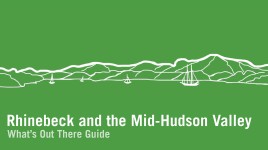Pioneer Information
Born in Boston, Massachusetts, Sargent graduated from Harvard College in 1830. He worked in law and banking offices before marrying Caroline Olmsted, a distant relative of Frederick Law Olmsted, Sr., in 1839. The couple acquired a 22-acre estate east of the Hudson River in Matteawan, New York (now Beacon), in 1841, crowning it Wodenethe; a combination of Saxon words meaning “wooded promontory.” Inspired and advised by his friend Andrew Jackson Downing, Sargent laid out paths, established gardens, and planted and removed vegetation to take advantage of scenic vistas. An avid horticulturist, his conifer collection was applauded as one of the most complete in the United States by his cousin Charles Sprague Sargent, the first director of the Arnold Arboretum in Boston, Massachusetts. Several varieties of weeping hemlock are named in honor of Sargent and his Hudson Valley estate. He employed Picturesque styles elsewhere in Matteawan in the 1860s, designing the grounds of his congregation, St. Anna’s Church (now St. Andrew and St. Luke Episcopal Church) and General Joseph Howland’s 100-acre Tioronda estate.
Sargent was a frequent contributor to Downing’s journal, The Horticulturist, and penned supplements to several books authored by Downing, including the 1859 edition of Theory and Practice of Landscape Gardening, first published in 1841, and the 1873 edition of Cottage Residencies, first published in 1842. In 1871 Sargent published Skeleton Tours, a guide to gardens of the United Kingdom, Scandinavia, Russia, Poland, Malta, and Spain. Sargent died at 71 and is buried at the cemetery of St. Andrew and St. Luke Episcopal Church in Beacon, New York.




